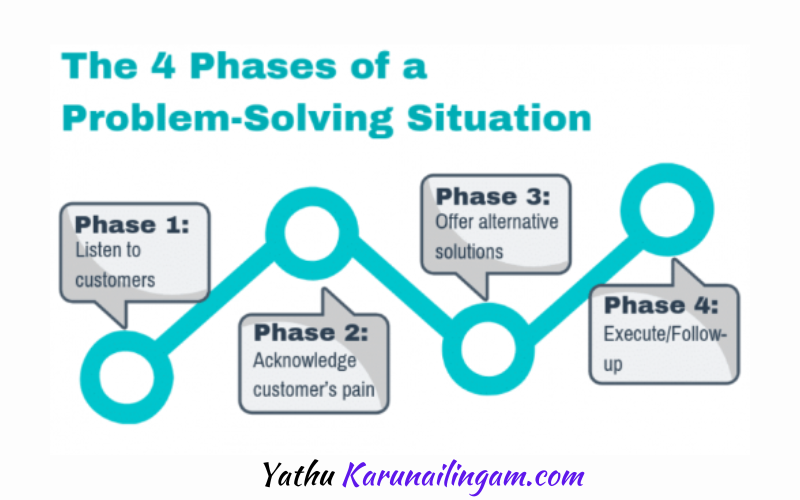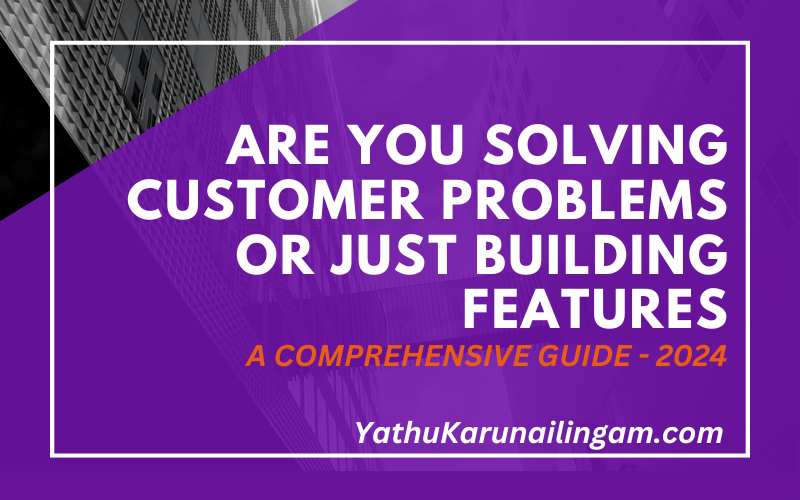- September 23, 2024
- by uyuwh
- Blog
- 0 Comments
It’s easy in today’s fast paced business world to get caught up with the excitement of launching a new feature. Many companies focus more on what they can create than why. Here’s an idea: Are you solving customer problems or just building features? This question is at the core of innovation.
Customers don’t want more tools, they just want solutions that will make their lives easier. This distinction is crucial for any business that wants to achieve long-term success. We’ll examine how a customer-centric strategy can help you reshape and refocus your strategy, helping you to prioritize real problem-solving instead of feature overload. Prepare to change your mind and learn how focusing on the real needs of customers can lead to remarkable business growth.
Table of Contents
Understanding the Difference Between Solving Problems and Building features
Any business must understand the difference between building features and solving problems, Yathu Karunailingam is here to make it understanable. Features are usually shiny, attractive additions that attract attention, but do not necessarily address the core issues of a customer.
Focusing on features can lead to an unending cycle of development, without a clear direction. Instead of focusing on the needs of users, teams might focus on trends or competitors’ offerings.
Problem-solving, on the other hand, digs deeper into customers’ needs. Listening and understanding the real pain points of your audience is essential. This method encourages innovation that is based on genuine needs rather than superficial improvements.
Businesses should prioritise meaningful solutions in this environment over simple functionality. In doing so, businesses not only increase user satisfaction, but also build long-lasting loyalty among their customers.
Difference Between Product Owner and Product Manager – Learn with Yathu K.
Customers-centric approach is important for business
Any business that wants to succeed in a competitive environment must adopt a customer-centric strategy. It puts the customer in the center of all decisions, ensuring their needs and preferences are used to guide product design, development and services.
Customers are more loyal to companies that prioritize them. Customers who are satisfied will be more likely to refer and return. This organic growth is a powerful asset.
Understanding customer behavior also leads to tailor-made solutions. Businesses can develop offerings that are tailored to specific pain points. It not only improves the user experience, but also increases brand reputation.
Engaging with customers also allows businesses to be ahead of the trends. Direct feedback allows businesses to gain insights on what works and doesn’t work, which in turn helps them improve over time.
Adopting a mindset that is customer-centric transforms the relationship of businesses with their clients to a journey towards success.

You can Identify Your Customers’ Pain Points and Needs by Identifying their Needs
To understand your customers, you must first identify their pain points. They are the frustrations and challenges they face in their everyday lives or work processes.
Engage your audience directly through social media, surveys, interviews or other interactions. By asking targeted questions, you can gain valuable insight into what matters most to your audience.
Listen to what customers have to say about existing products. These comments can reveal specific problems that require attention.
Online reviews and comments are also important to monitor. They provide a real-time reaction from users regarding your products and those of competitors.
Observe changes in consumer behaviour and industry trends. You can adapt to these changes and remain relevant, but you will also be seen as a solution-provider by your customers.
Building Features vs. Solving Problems
Often, the desire to demonstrate innovation is what drives companies to build features. Companies are often excited by new technologies and capabilities in design, and rush to implement them. This approach, however, may miss what really matters — customer needs.
Solving problems, on the other hand requires a deep understanding of user experience and empathy. It’s all about understanding what customers are struggling with and creating solutions that truly address these pain points.
If teams only focus on features, they may create products that are visually impressive but lack in functionality. If the tools are not useful, customers may not use them.
Prioritizing the solution of problems shifts the focus to the customer journey. Businesses can create valuable solutions for users that will resonate with them, and foster loyalty and satisfaction.
How to Prioritize Problem Solving over Feature Building?
Engage your customers directly to prioritize problem solving over feature building. Surveys and interviews can be conducted to discover their problems. Listen to their language; it can reveal more about what they need.
Analyze any customer data that you already have. Search for patterns that indicate recurring problems or frustrations. This information will help you focus on solutions, rather than new features.
Create a framework for decision-making based on the insights. Ranking potential projects based on how well they address identified problems. Include cross-functional teams to get diverse perspectives and ideas.
It’s not just about adding bells and whistles, but improving the user experience with meaningful solutions. Communication is key as priorities can change based on customer feedback and market trends.
What is the Role of Product Manager in Problem Solving – Learn With Yaathu K.
Using Feedback and Data to Improve Customer Solutions
Any business that wants to improve its offering can benefit from feedback. Listening to customers can reveal insights that will help you find effective solutions.
These data are invaluable. This data helps to identify trends and areas that need attention in terms of customer satisfaction.
By analyzing this feedback, businesses can adjust features or pivot if needed. Data-driven solutions are more appealing to users when they are based on data.
Monitoring engagement metrics also gives you a better picture of the way customers interact with your products. Understanding which features customers like and dislike will guide future development.
By implementing changes based on the insights, you can build trust between your brand’s audience and yourself. When customers see that their suggestions are taken seriously, they feel valued. This reinforces loyalty and encourages further interaction.
Case Studies: Successful Companies that Solved Customers’ Problems
Certain companies are shining examples of how to solve customer problems. Slack is a good example. They started out as a gaming company but changed direction when they realized that their internal communication tool would help organizations with collaboration problems. They transformed communication between teams by focusing on improving the user experience and streamlining interactions within teams.
Airbnb is another notable example. In order to address the issues of trust and safety with peer-to-peer rental, they developed robust verification systems and community support systems. The move helped to alleviate users’ fears and also created a sense security for both hosts and guests.
Spotify recognized that music discovery is a constant struggle for many listeners. They tackled the issue by utilizing data analytics to create customized playlists such as Discover Weekly. This kept users engaged by providing them with new content that was tailored specifically for them. This approach demonstrates how understanding the needs of customers can lead to innovative and engaging solutions.
What Does a Product Manager Do in Solving Problem – Learn With Yathu K.
Conclusion
Adopting a mindset of problem-solving transforms the way businesses interact with customers. It’s more than just adding features. It’s about finding meaningful solutions that resonate.
You can build loyalty and trust by focusing on solving problems for customers. Prioritizing customer needs over flashy features makes customers feel valued. This creates deeper connections.
A commitment to understand challenges also leads to innovation. Teams adapt more quickly to changing market conditions and preferences.
Listening and responding effectively are key to long-term success. Businesses that prioritize problem solving create an environment conducive to growth and sustainability.
Every interaction is an opportunity to improve. This realization transforms the company culture and not just products.
FAQs
What’s the distinction between building features and solving customer problems?
While solving customer problems is focused on meeting specific requirements through effective solutions and building features, it’s often about adding new capabilities that don’t adequately address user challenges.
What are the pain points of my customers?
Look at the support tickets to see if there are any recurring themes.
Why should I prioritise problem-solving rather than feature-building?
Focusing on real issues can increase user satisfaction, and brand loyalty. This is better than adding more features that are not useful.
Can data improve our understanding of customers’ needs?
Absolutely! You can refine your offerings by analyzing usage data.





